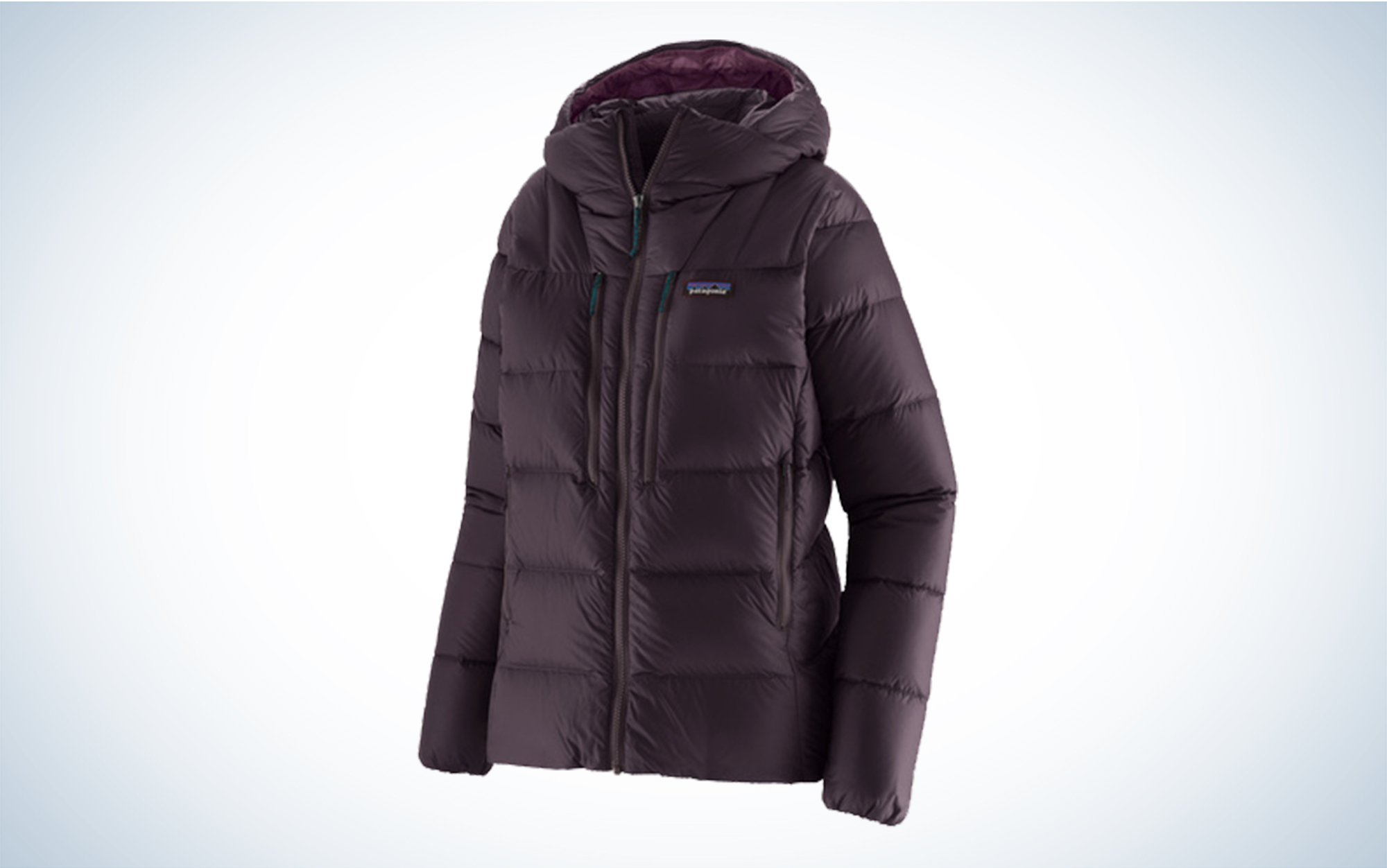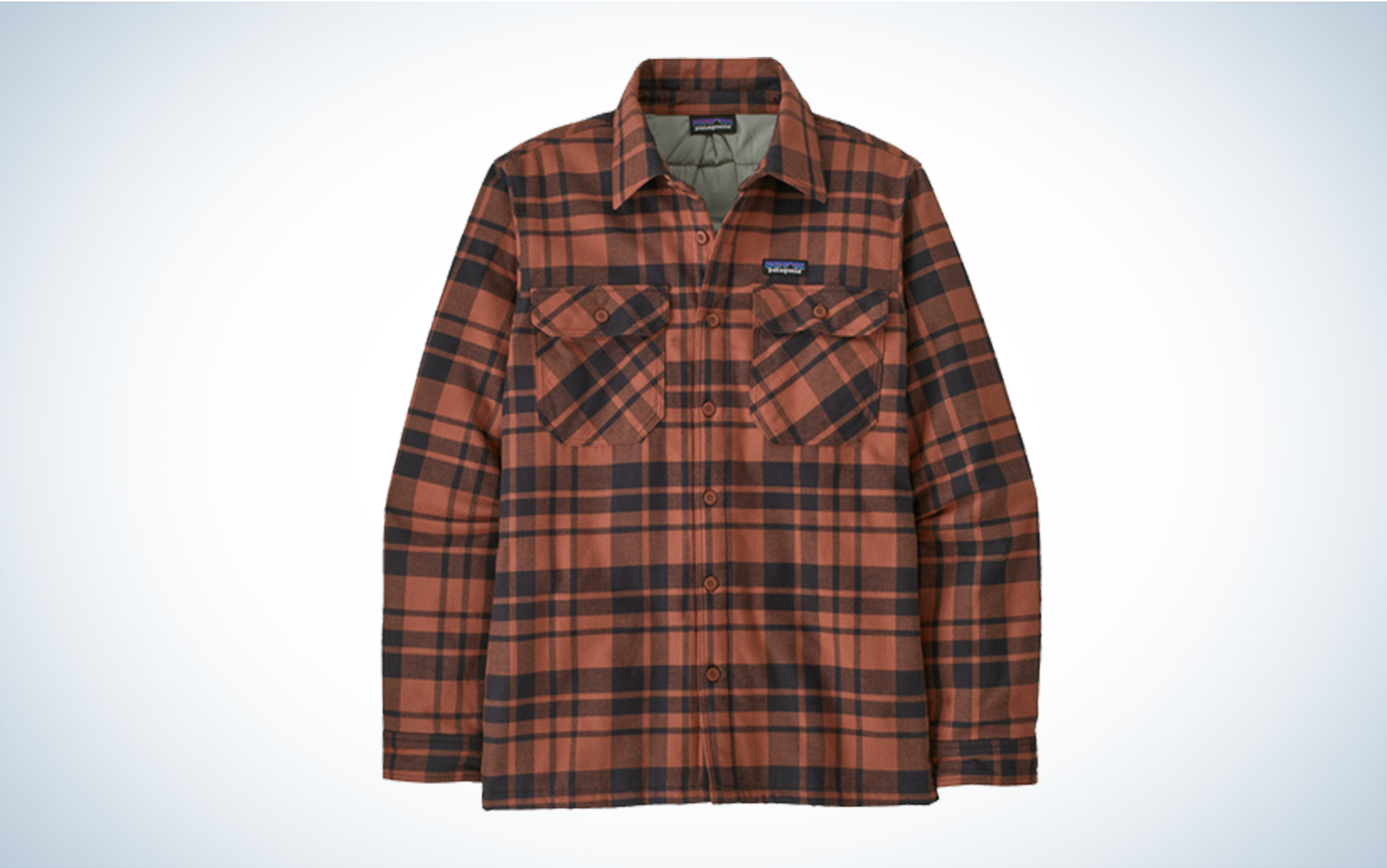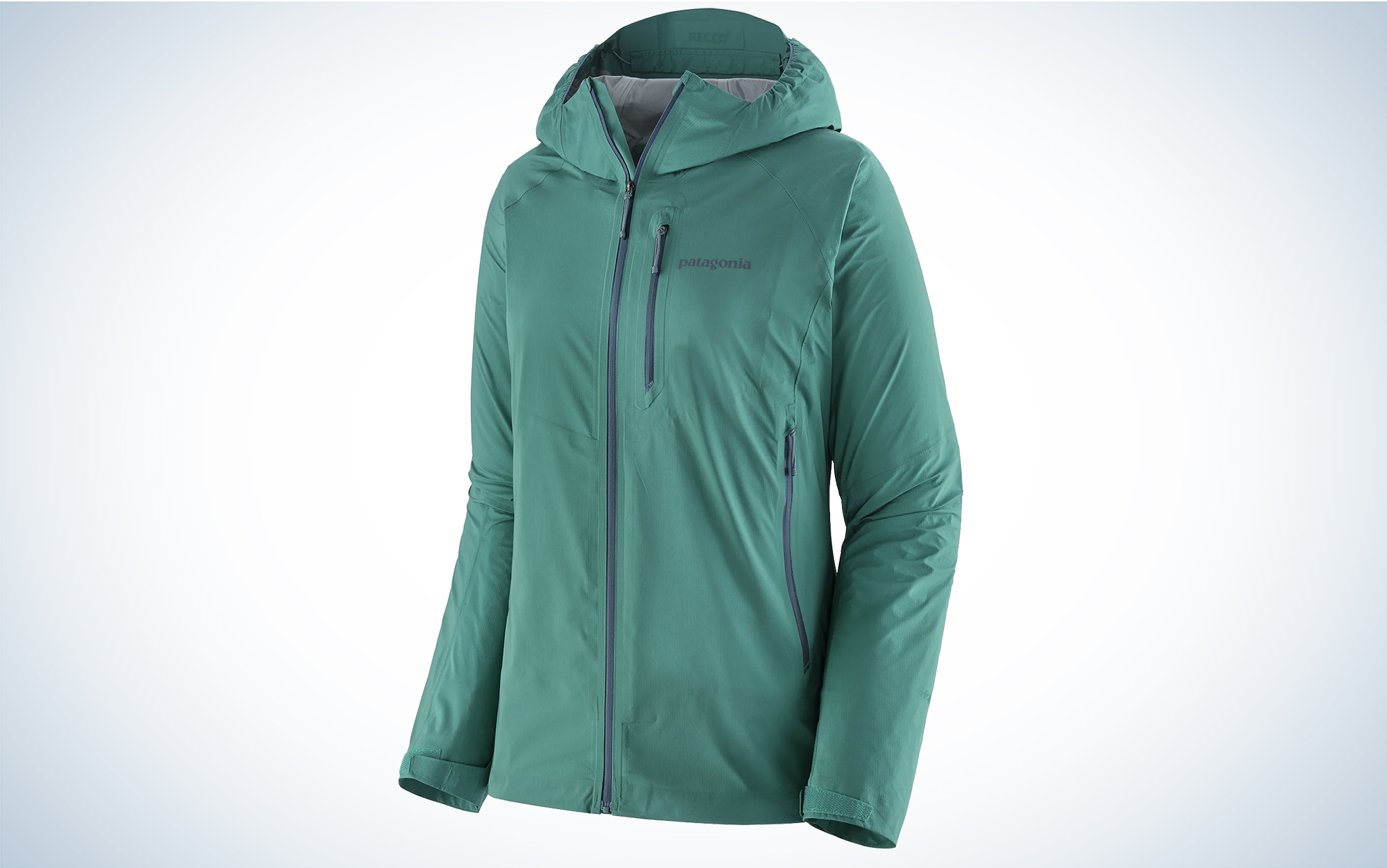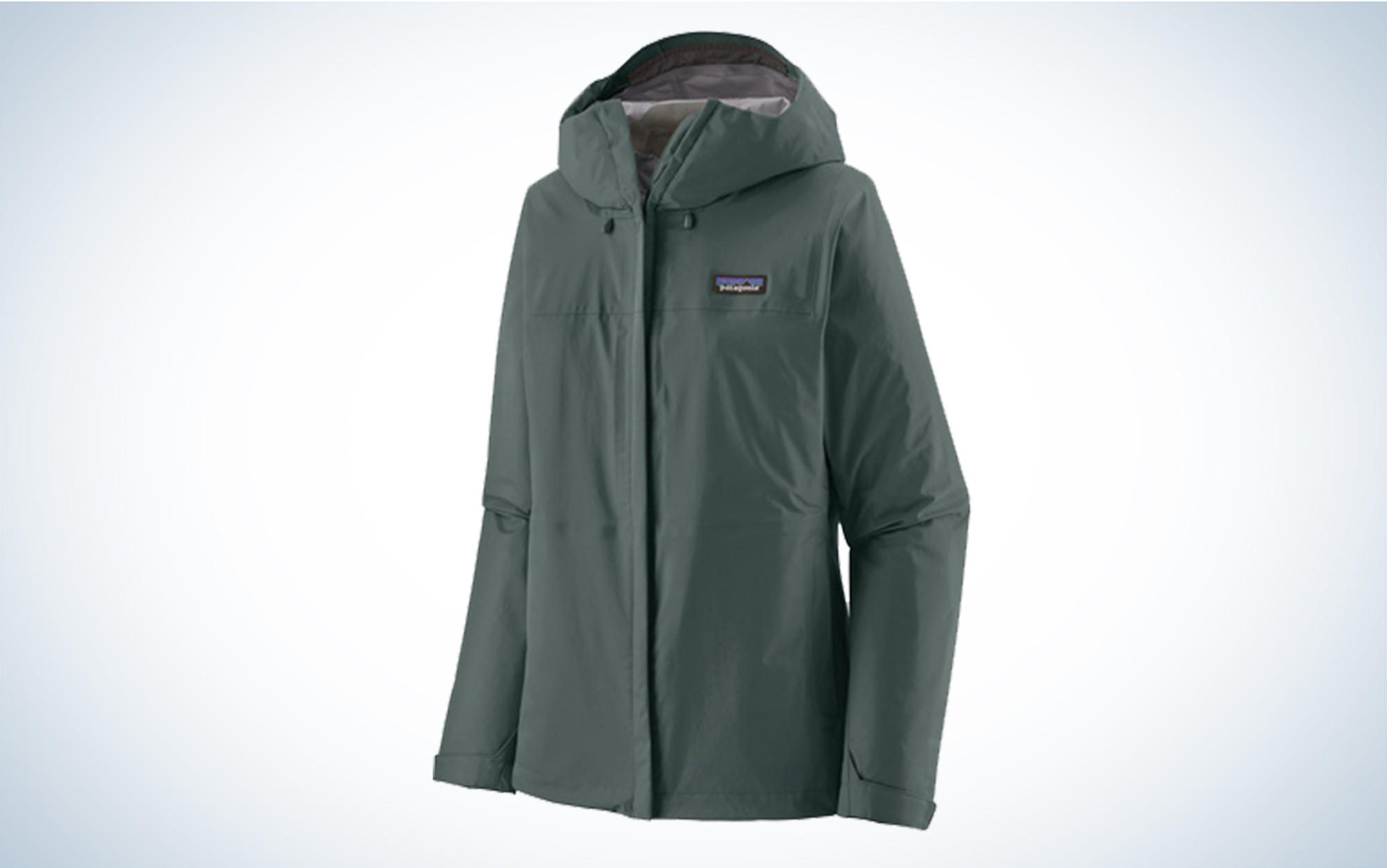We may earn revenue from the products available on this page and participate in affiliate programs. Learn More ›
Patagonia is one of the most well-known outdoor brands. They have a reputation for bright colored outdoor gear and apparel made from synthetic and recycled materials. Patagonia will repair most products you purchase from them, or let you trade it in, should it tear or outlive its usefulness to you. Their logo signifies 50 years of gear manufacturing and one of the more ecologically conscious brands in the business, but that quality and reputation comes at a cost.
If you don’t have experience with Patagonia’s synthetic and recycled fabrics (oftentimes not mutually exclusive) it’s hard to tell how a garment will perform. So to find out which of Patagonia’s jackets are your next gear upgrade or the best gift for outdoors people, we put them to the test while running, hiking, backpacking, hunting, camping, skiing, touring, and sailing.
How We Tested the Best Patagonia Jackets
I’ve been getting active with some of the best Patagonia jackets for four months now and the Better Sweater fleece has been one of my go-to layers for nearly seven years. I wore these jackets for a variety of activities and around town to get an idea of where they perform best. OL staff writer Katie Hill and testers on the backpacking gear test last year put Patagonia’s rain jackets to the test for blocking wind, water, and snow. Find our opinions and reviews below.
Best Patagonia Jackets: Reviews & Recommendations
Best Synthetic: Patagonia Nano Puff Jacket
Key Features
- Sizes: Women’s XXS-XXL, men’s XS-3XL
- Price: $239
- Weight: 11.9 ounces
- Materials: 100 percent recycled polyester ripstop with a PFC-free DWR finish and 60 grams PrimaLoft Gold Insulation
- Pockets: Two zippered handwarmer pockets and an internal zippered chest pocket that doubles as a stuff sack
- Worth the Money? Depends
Pros
- Synthetic insulation stays warm when wet
- Three useful pockets
- Lightweight
Cons
- Pricey
- Durability concerns
This jacket is excellent for active days outside. The DWR-finished outer layer may absorb some water in light rain, but it’ll take more moisture than that to seep into the underside. The synthetic insulation will also keep you warm even when wet. This jacket is great on its own for high-energy days, shoulder season, cool summer nights, and mild winter temperatures.
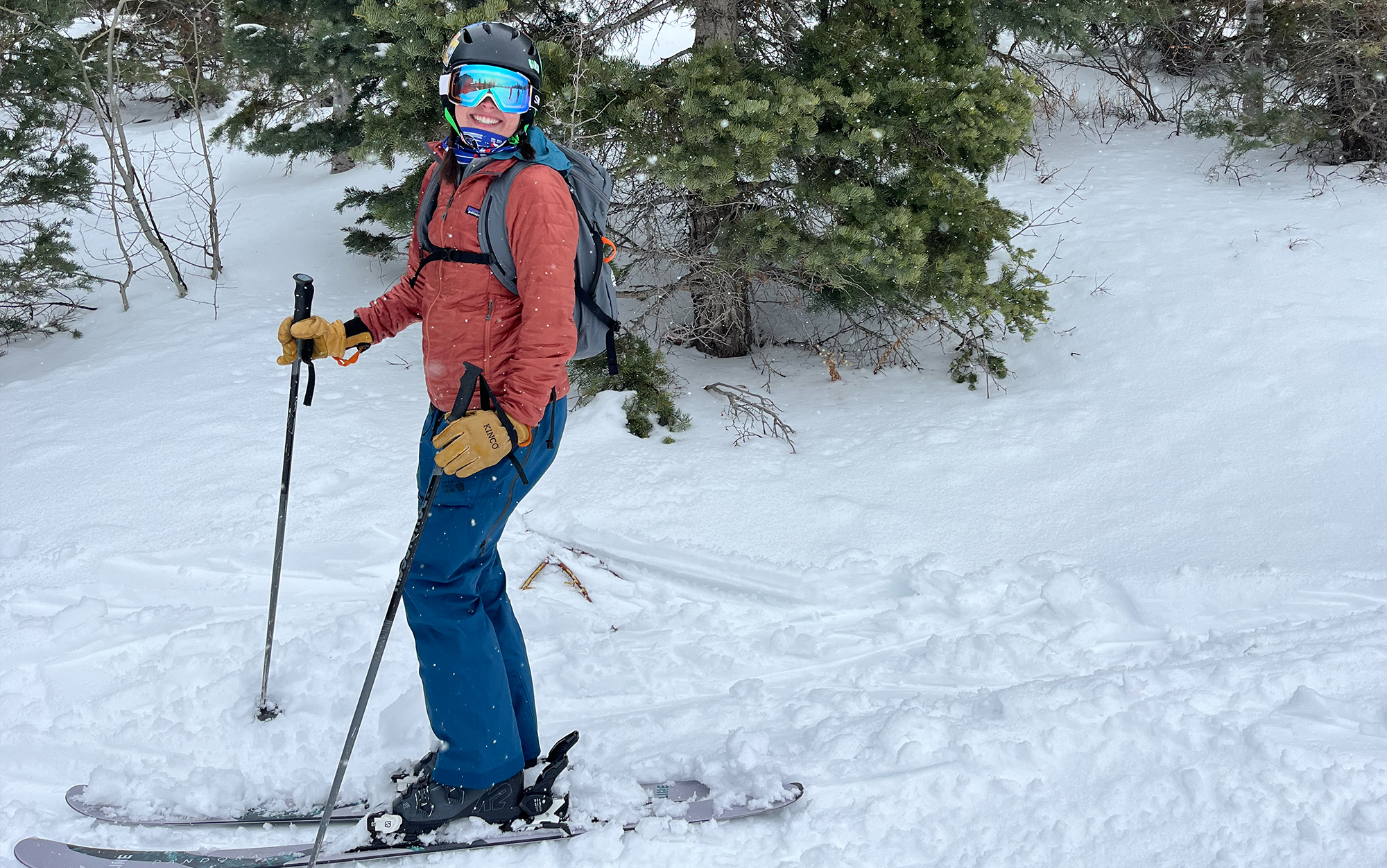
I wear this Patagonia jacket in colder conditions as a mid-layer for skiing. By adding a thermal underneath and a shell on top, I’m comfortable all day on the slopes, even in a storm. Once, I forgot my shell layer and tested the Nano Puff as an outer layer on a snowy ski day in 31-degree weather. Underneath, I had on a lightly insulated vest, bibs, and wool base layer. I stayed warm all day, and while the outside of the jacket eventually got wet with the non-stop snow, the moisture never reached the inside.
That said, in very cold temperatures, plan on an efficient layering system. This puffer jacket is lightweight and packable as an extra layer. While pricey for such a thin layer, it’s versatile enough for all-season wear to really get your money’s worth. I also love the three large, zippered pockets for storage. If you’re going out for a short walk, hike, or run, you’ll likely be able to carry everything you need in this jacket.
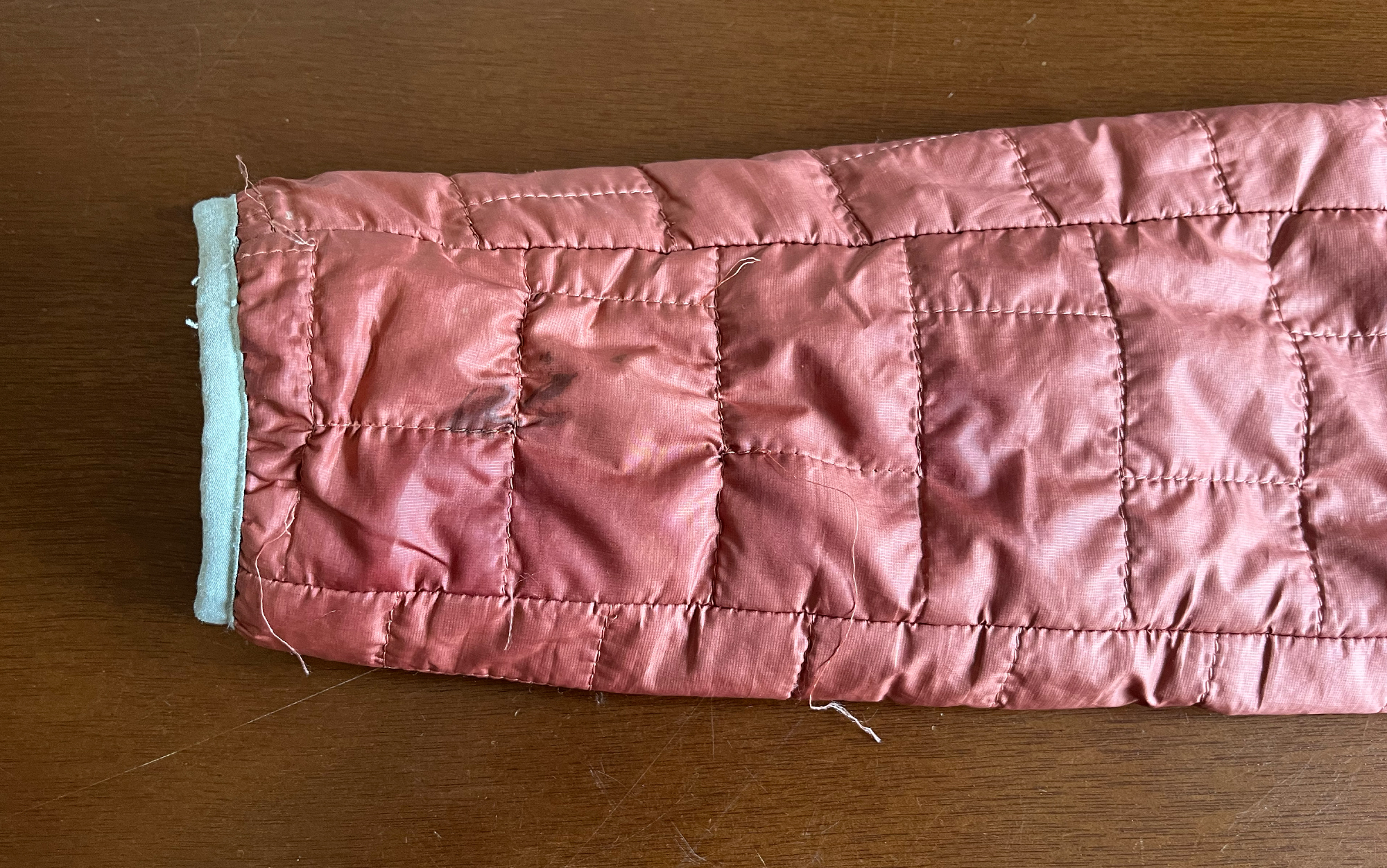
One downside is that some of the quilt stitching is already coming undone on the left wrist, likely from carrying my skis over my shoulder and the edge broke the threads. This could lead to cold spots where the insulation starts to shift. I can’t overlook damage like this to a $239 jacket. While I love this layer because it’s great for all-seasons, the durability needs to match its versatility. It’s no good to have a year-round layer that won’t survive that long. If you can find it on sale, or aren’t as hard on your gear, this jacket is worth the money.
Best Down: Patagonia Fitz Roy Down Hoody
Key Features
- Sizes: Women’s XXS-XXL, men’s XS-3XL
- Price: $399
- Weight: 17.1 ounces
- Material: 100 percent recycled nylon downproof ripstop with a PFC-free DWR finish and 800-fill-power Responsible Down Standard down
- Pockets: Two handwarmer pockets, two external zippered chest pockets, and large internal catch-all pocket with elasticized opening
- Worth the Money? No
Pros
- Warm
- Hood
- Packable
- Lightweight
Cons
- Zipper can snag liner fabric
While Patagonia is primarily known for their use of synthetic materials, this down hoody is delightfully overstuffed with 800-fill-power responsibly sourced down. It’s extremely warm, relatively lightweight, and packable. Like the Nano Puff, it can be stuffed into the left chest pocket. This jacket is a great all-around winter coat for low-activity adventures outside. Though, I wouldn’t wear this as a skiing mid-layer because it is so warm and puffy.
One issue I had was one of the handwarmer pocket’s zippers snagged some of the lining material and would not open. Eventually I had to force the zipper, tearing the lining. Now when I open that pocket, fluff flies out. I attempted to recreate the issue by zipping up the shell material, but it unzipped right out. This leads me to believe that the lining’s recycled nylon ripstop sourced from recycled fishing nets is the problem. The shell is also recycled nylon, but it isn’t sourced from post-consumer fishing nets. While Patagonia’s heart was in the right place to help reduce ocean plastic pollution, it missed the mark.
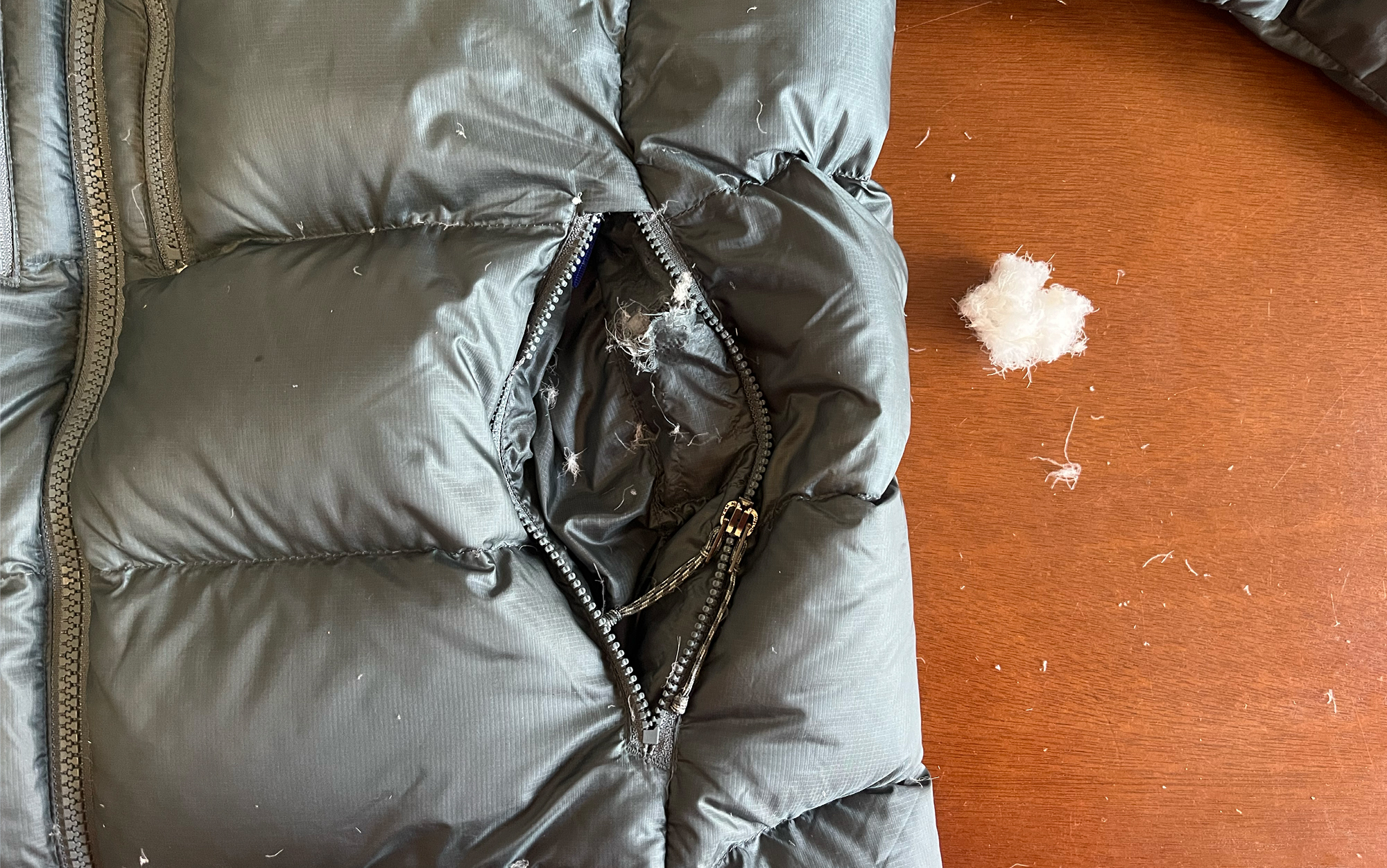
Typically a weaker liner is no issue because it doesn’t see the same abuse as the shell, but zipper snags weren’t taken into account. The jacket’s main zipper has a storm flap to protect it, but the pockets pose a fail point. At $400, I would expect greater durability and no design flaws. While the Fitz Roy Down Hoody is a great outer layer for very cold conditions, I’d like to see some updates. Using recycled materials is great, but if it’s to the detriment of a product’s performance and life-span, it’s more wasteful than using reliable materials.
Best Technical Fleece: Patagonia R1 Air
Key Features
- Sizes: Women’s XXS-XL, men’s XS-XXL
- Price: $179
- Weight: 10.9 ounces
- Material: 100 percent recycled polyester jacquard fleece with hollow-core yarns
- Pockets: Small left-chest pocket, two zippered front pockets, and two internal drop-in pockets
- Worth the Money? Yes
Pros
- Moisture wicking
- Breathable
- Slim-fit hood
Cons
- Chest pocket is too small for a phone
This technical mid-layer is a worthy addition to your wardrobe. The R1 Air is great for high-energy activities when you want warmth and breathability. It’s moisture wicking and the hood is slim enough to fit under a helmet. The full zip comes up to your chin for a built in buff effect.
Whether you’re running, hiking, or skiing, this thin and compressible jacket is versatile for all-season wear. It’s not constricting but fits tight enough to layer without adding unnecessary bulk. The warmth achieved by such a thin layer is worth the price tag if you stay active even after the mercury drastically drops.
Best Sweater: Patagonia Better Sweater Fleece
Key Features
- Sizes: Women’s XXS-XL, men’s XS-XXL
- Price: $139-159
- Weight: 13.8 ounces
- Material: 100 percent recycled polyester jacquard fleece with hollow-core yarns
- Pockets: Small left-chest pocket, two zippered front pockets, and two internal drop-in pockets
- Worth the Money? Yes
Pros
- Warm
- Comfortable
- Versatile
Cons
The Better Sweater is one of Patagonia’s best sellers. While Wall Street’s unofficial uniform may be the corporate embroidered Better Sweater, it’s more than a status symbol. It’s a functional and durable layer that will last long after your company sells or rebrands.
It comes in both quarter and full-length zippers. I’ve had my quarter-zip since college and I still reach for it every shoulder season. It also makes a great mid-layer for skiing or extreme temperatures. While not as stretchy or breathable as the R1 Air, it is thicker, blocking more wind. It’s also durable with no snags after years of hard wear. The chest pocket is very roomy and large enough for a phone, and more.
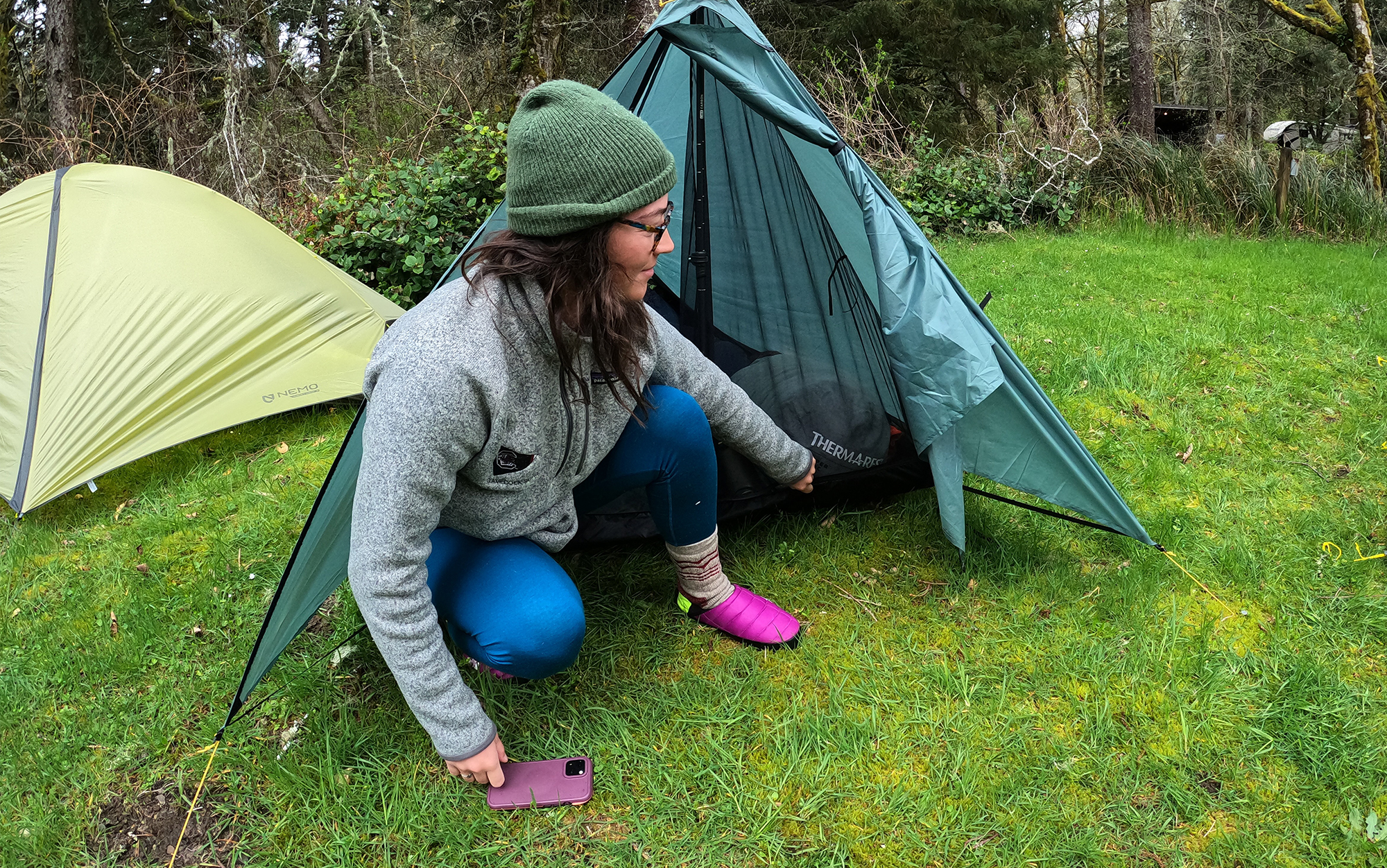
I would suggest sizing up due to the lack of stretch. I have a men’s size medium that fits perfectly oversized with room for layering. This jacket is a bit heavy for backpacking, but shines while camping, fishing, hiking, and more. I’ve capsized in this jacket and can confirm it will keep you warm even when soaking wet.
Best Insulated Flannel: Patagonia Insulated Organic Cotton Mid Weight Fjord Flannel Shirt
Key Features
- Sizes: Men’s XS to XXL
- Price: $189
- Weight: 24 ounces
- Materials: 100 percent organic cotton shell and 60 grams Thermogreen 100 percent recycled polyester insulation
- Pockets: Two flapped chest pockets secure with buttons; side-entry handwarmer pockets
- Worth the Money? Yes
Pros
Cons
- Only available in men’s
This organic cotton flannel is lined with 60 grams of recycled insulation. It’s a lightweight puffer jacket with the aesthetic and durability of a flannel. My tester reported that it isn’t too hot indoors, yet still keeps you warm and cozy outside. In brisk and even windy conditions, this jacket will trap enough heat to keep you outdoors. The button closures and deep pockets are also great features.
However, on my typical women’s frame, this shirt felt boxy and long. I wouldn’t recommend it for women until Patagonia creates a women-specific design. But if you have a broader build and are looking for a trail to town jacket, this is it.
Most Eco-Friendly: Patagonia Storm10
Key Features
- Sizes: Women’s XXS-XL, men’s XS-XXL
- Price: $330
- Weight: 7.8 ounces
- Material: H2No Performance Standard
- Pit Zips: Yes
- Pockets: Two zip pockets at waist; one zip pocket at left chest
- Worth the Money? No
Pros
- Fair-trade certified
- Contains 87 percent recycled nylon
- Has pit zips
Cons
- Some moisture snuck in during the shower test
- Expensive
So, as it turns out, creating a perfectly waterproof, windproof rain jacket isn’t exactly the most environmentally friendly process. In recent years, there has been greater awareness around the dangers of some of the chemicals, including PFAS, that are used to waterproof outdoor gear, and commitment by some of the more forward-looking brands to start to rectify the problem.
While this is an ongoing issue that none of the backpacking rain jackets I looked at got exactly right, the one that got the closest to hitting the mark was the Patagonia Storm10. In addition to being fair-trade certified (which looks at whether the workers who make the apparel are being paid a sustainable wage), it also contains 87 percent recycled nylon.
Despite being one of the more expensive rain jackets I looked at, the Patagonia Storm10 struggled during the shower test, with some moisture evident on the hiking shirt underneath. Its waterproof fabric, however, easily passed the waterproofing test: leaving a puddle of water on top of one of the seams on the back of the jacket for 24 hours to see if it would soak through. This is a great better-for-the-planet rain jacket, but try to find it on sale. —Laura Lancaster
Best All-Season: Patagonia Torrentshell
Key Features
- Sizes: Women’s XS-XXL, men’s XS to 3XL
- Price: $179
- Weight: 12.4 ounces
- Material: H2No Performance Standard three-layer
- Pit Zips: Yes
- Pockets: Two pockets at hips
- Worth the Money? Yes
Pros
- Has pit zips to vent in warmer weather
- Microfleece-lined neck for extra comfort
Cons
- Heavier than other available options
OL staff writer Katie Hill’s go-to rain jacket is the Patagonia Torrentshell, which she appreciates for its functionality in a wide range of conditions. She uses it throughout the year, from winter sports to backpacking in Zion in July, but is most impressed by the flexibility of the material. That allows her to move naturally, making this her go-to choice for trail running in addition to hiking, fishing, and working outside.
She can get away with that in a non-breathable rain jacket even while running because the Patagonia Torrentshell incorporates zips underneath the armpits that allow her to dump heat when she’s gaining elevation on a trail. These runs have also given her a chance to test out the jacket’s durability: She reports that after countless miles pairing the Torrentshell with a hydration vest while out on trail runs, the jacket not only looks great and cleans up easily, but also hasn’t picked up any unwanted odors. —Laura Lancaster
Things to Consider Before Buying the Best Patagonia Jackets
Finding the right jackets for your layering system starts with activity level and incorporates your usual conditions and price.
Activity Level
If you’re looking for a jacket that can handle the slopes, trail, and campfire while also transitioning to town, the Fitz Roy Down Hoody, Better Sweater, and Fjord Flannel could all fit the bill. Your activity level will dictate which will be the best for your lifestyle. The Fitz Roy Down Hoody is ideal for low temps and low energy thanks to its insulation. The Better Sweater and Fjord Flannel are more durable, and the Better Sweater can act as a mid- or outer-layer.
Usual Conditions
For high-energy activities, you might want something lightweight, breathable, and moisture-wicking. If you’re a runner looking to keep moving even in chilly weather, the Nano Puff, R1 Air, or Storm10 could be right for you. If you want a breathable mid-layer, the R1 Air is ideal, but if your usual conditions include snow and wicked cold temps, the Nano Puff is a better bet, while the Storm 10 is lightweight and waterproof.
Price
While the best Patagonia jackets can be costly, you’re also getting the quality, warranty, and repair/trade-in benefits associated with the brand. That way your garment lives longer, and you won’t have to replace it (or send it to a landfill).
FAQs
Yes, the Patagonia Nano Puff is warm enough to wear in winter. I wore it around town and skiing in freezing temperatures and felt plenty warm. It might not stand up to negative temps or elements you might encounter on an expedition, but it is a very effective insulator, and if you layer properly, you will be warm. It’s an all-season jacket that thrives in mild winter conditions.
Yes, you can wear your Patagonia jacket in the rain, but if you don’t want to get wet, I would opt for the Torrentshell rain jacket. In all seriousness, the Nano Puff did also stand up to hours of prolonged exposure to falling snow without any moisture seeping inside.
Final Thoughts
Patagonia gear is an investment, but the quality, eco-consciousness, and warranty keep people coming back. Many of their products like the Nano Puff and Better Sweater have cult-like followings. While the brand can be pricey, we tested the best Patagonia jackets in an effort to help you decide which layers are right for you and which products are worth the cost.

